Common old woman
Oil on canvas, 31.5 x 22 cm
With frame, 47.5 x 38 cm
Signed in the lower right
Pompeo Massani (Florence, December 1850 - 25 August 1920) was an Italian painter who distinguished himself in the artistic scene of his time for his genre painting, often characterized by a touch of irony and a particular attention to the customs of the time. His career, entirely linked to the city of Florence, saw him emerge as a prominent figure and, subsequently, as an appreciated academic. His artistic training took place at the Accademia di Belle Arti in Florence, an environment that provided him with the technical and cultural bases to develop his talent. Crucial was also the period of three years spent in the studio of the painter Michele Gordigiani, an experience that certainly contributed to refine his technique and to direct him towards portrait painting and figure painting. A Portrait of Michele Gordigiani on the easel is now kept in the Gallery of Modern Art at Palazzo Pitti, testimony to his bond with the master. Massani made himself known to the public for the first time in 1875, when he exhibited a portrait at the Società di Incoraggiamento in Florence. His success grew quickly, and works such as La politica in canonica (1879), which earned him a silver medal at the Rovigo Exhibition, and A Toast to the Friar (1881), awarded in Genoa, consolidated his reputation. Pompeo Massani’s style is strongly linked to genre painting, with a predilection for scenes depicting everyday life, often set in bourgeois or popular interiors, with characters in costume. His works are animated by keen observation and an ability to grasp expressive details, often with a narrative and sometimes satirical cut.He loved to depict elderly people, immersed in moments of seemingly funny life or famous carelessness, such as scenes of drunkenness or card games. This humor and bonaria vein earned him a wide popularity both in Italy and abroad, especially in the American market. In addition to the genre scenes, Massani was also an appreciated portraitist, performing, among others, the portrait of Vittorio Emanuele II and the Countess of Mirafiore. He also tried delicious tablets "from the truth", showing a taste that sometimes recalled the experiences post-macchiaiole, and occasionally devoted himself to orientalist subjects. His career was marked by official recognition: in 1887 he was awarded the Knight’s Cross of the Order of the Crown of Italy by King Umberto, and was appointed honorary professor of the Academy of Fine Arts of Florence. He also took an active part in the organization of cultural events, such as the historical dance and celebrations during the May festivities of 1887 in Florence. Among his most well-known works, in addition to those already mentioned, are Circus equestrian (exhibited in Monaco in 1889), The grand ronde (sold in Boston), The drawing lesson (purchased from the house Goupil of Paris), Old celibates, A card game, The concert, In the cellar and Greeting to the hunchback. His ability to create pictures rich in anecdotes and to capture everyday life with an eye for the customs of the time has made his works very sought after on the art market, ensuring a constant and lasting success. Pompeo Massani died in his hometown, Florence, in 1920, leaving an artistic legacy that testifies to his role as a sharp and amused interpreter of the society of his time.The painting in question shows an elderly female figure, presumably a commoner or beggar, standing and leaning against a rough wall. The work is an excellent example of Massani’s style, characterized by attention to detail and representation of everyday life, often with a touch of realism and dignity. The woman is the focal point of the composition. Her face is marked by time, with deep wrinkles that testify to her advanced age. His gaze is directed towards the observer, with an expression that seems a mixture of resignation and dignity. On his head he wears a brightly coloured handkerchief, predominantly yellow and orange, which contrasts with the aged skin. Her dress is traditional and modest: she wears a white shirt with wide sleeves, covered by a colored bodice or waistcoat, with shades of red and yellow that add a touch of vivacity. On the shoulders it has a red shawl, full of folds and details that suggest an elaborate fabric. A pale pink apron covers the front of her skirt, which appears gray-brown, with a worn and patched appearance. Next to her, on the left, she also holds a wicker basket, an element designed to distinguish popular figures or street vendors. On the background wall are some torn and unreadable posters, which add a sense of authenticity and street life. Massani uses a visible and material stroke, especially in the rendering of clothes and background, which gives texture and depth to the painting. The colors are warm but sober, dominated by earthy and ocher tones, with accents of red, yellow and blue-green that capture the attention on the figure. The work conveys a sense of realism and an empathy for the subject, typical of Massani’s genre painting, who loved to explore people’s figures and their living conditions, while maintaining a certain dignity in representation.


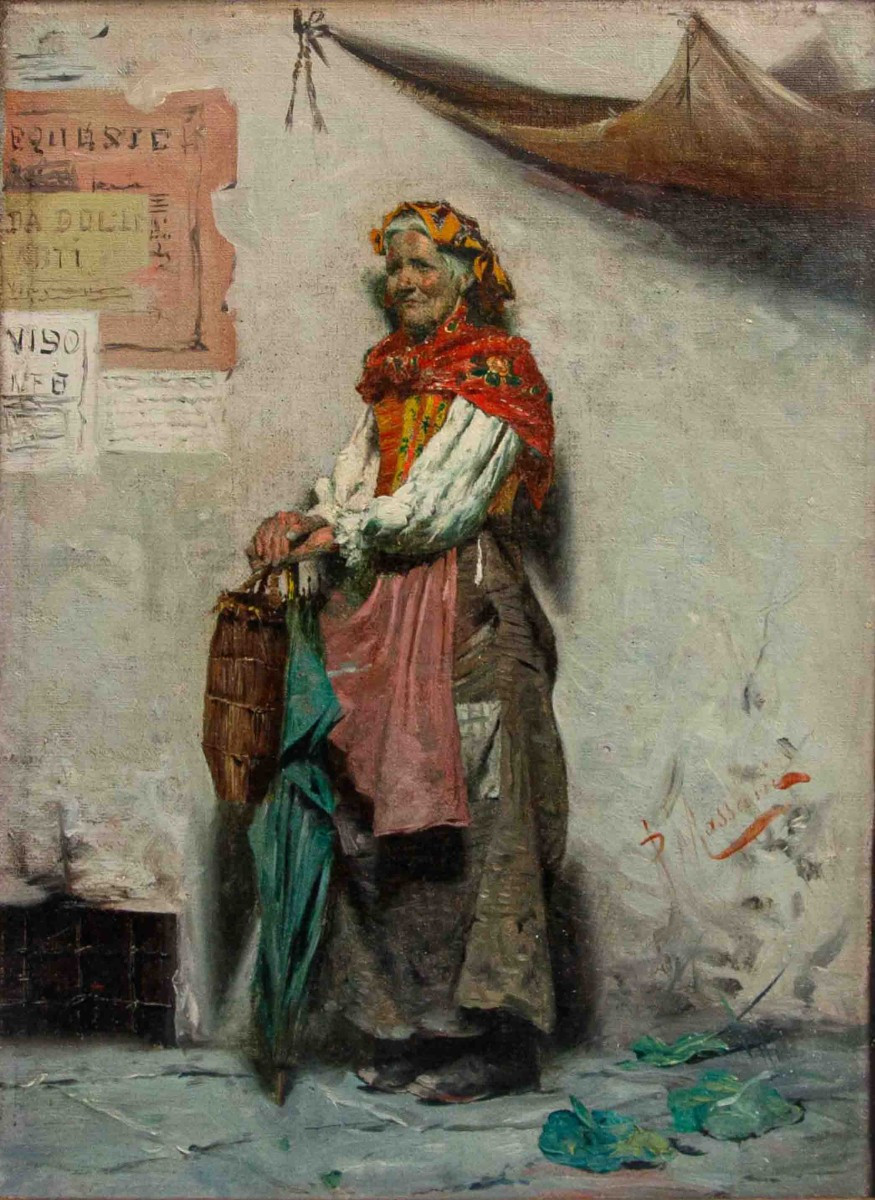



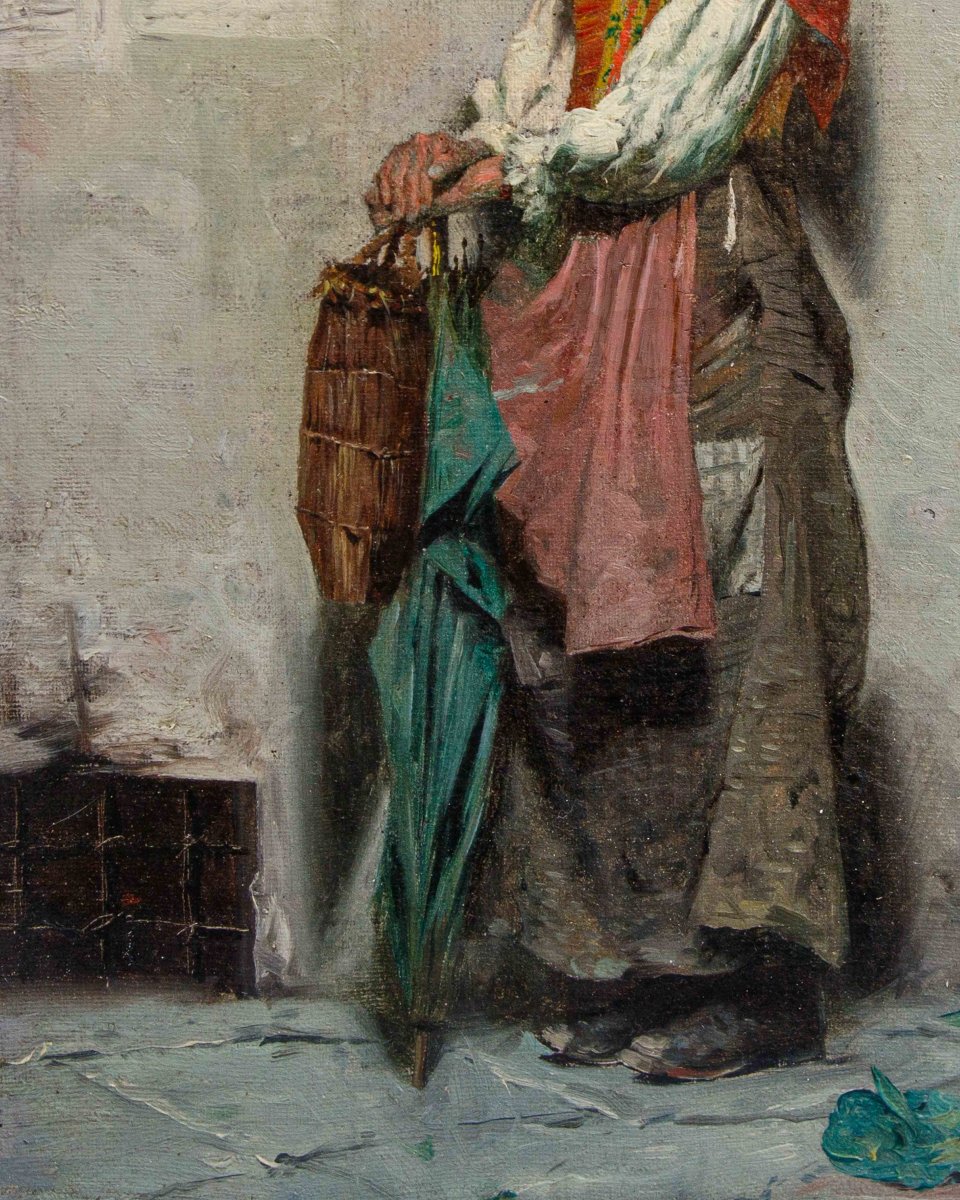
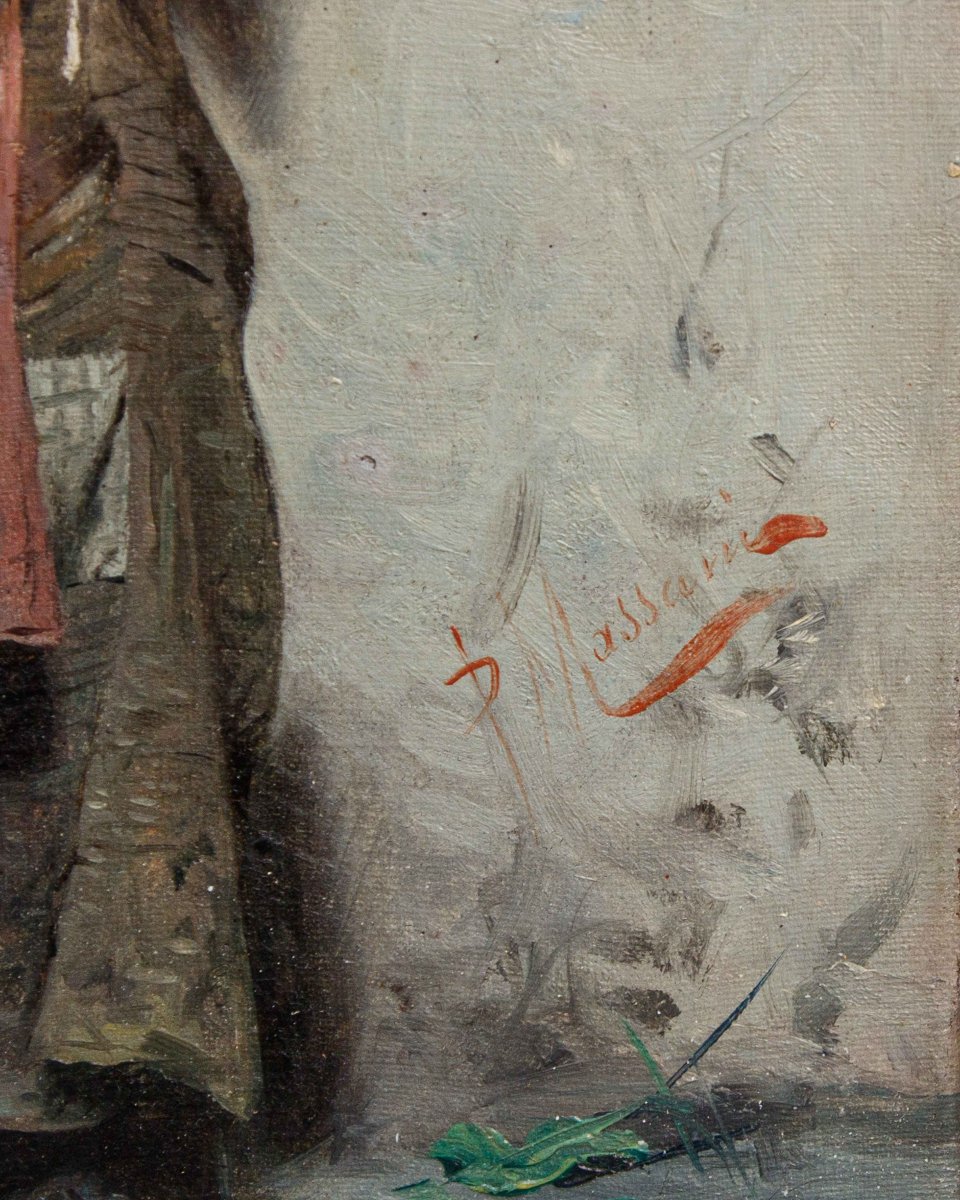


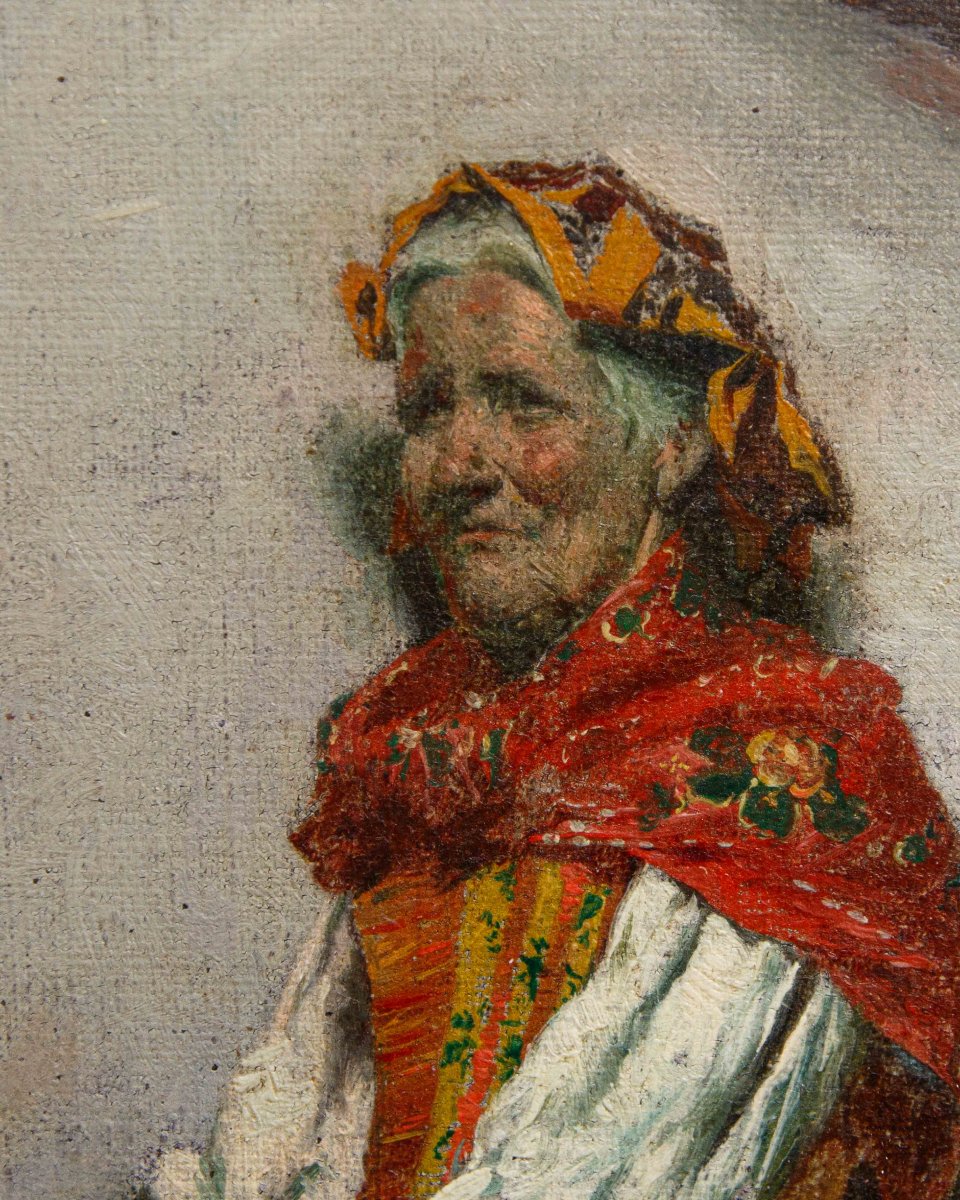













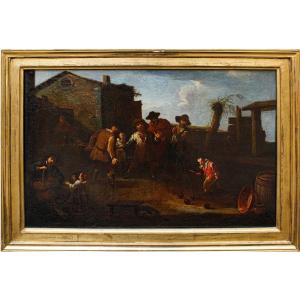




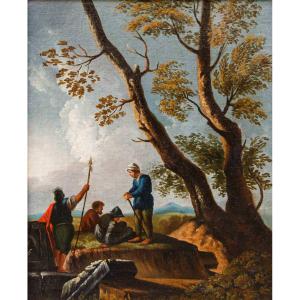








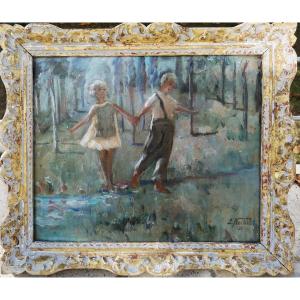







 Le Magazine de PROANTIC
Le Magazine de PROANTIC TRÉSORS Magazine
TRÉSORS Magazine Rivista Artiquariato
Rivista Artiquariato